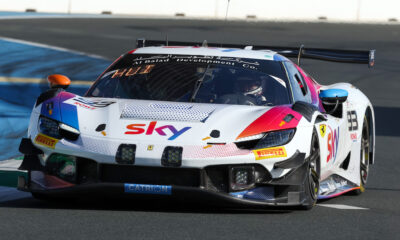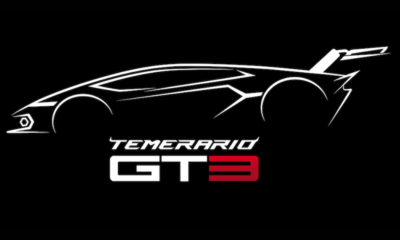
Photo: James Moy/Toyota
Kamui Kobayashi is “looking forward” to the prospect of Toyota’s LMP1 cars contesting the 24 Hours of Le Mans without the success handicaps that have separated them for much of the 2019-20 FIA World Endurance Championship season.
Success penalties are not used at Le Mans, where the Toyota TS050 Hybrids are operating to identical technical parameters outlined in the LMP1 Equivalence of Technology.
The Toyotas have been handicapped by different amounts at most of the races held so far in the 2019-20 WEC, which has often produced large gaps between them on track.
The only opportunities to race on an even technical footing have come at the Silverstone season-opener, the 4 Hours of Shanghai where the manufacturer’s crews arrived tied on points, and the handicap-exempt round at Le Mans.
Kobayashi, who drives the championship-leading No. 7 Toyota with Jose Maria Lopez and Mike Conway, said he’s excited to see the two cars competing on the same terms.
“It’s going to be an interesting situation,” suggested Kobayashi.
“In the last couple of races we struggled with the handicap. This time we are on the same [level] as our teammates.
“We are pretty happy because after the first race we always had a different EoT so we could never compare in the same situation.
“But now we have exactly the same, so we can really fight again and I am looking forward to fighting with our teammates in car No. 8.”
Kobayashi expects the Le Mans EoT will make it “fair to fight” the sister Toyota which has won the previous two editions of Le Mans.
Toyota Gazoo Racing technical director Pascal Vasselon has also suggested that the top non-hybrid LMP1 cars will be in closer contention this year compared to last year based on the EoT’s equalization of stint lengths in the top class.
While the EoT has given the Toyotas a 7 kg weight increase from last year, this rise to 895 kg is not as tough as the 932 kg that the cars have been set at for the other WEC races.
“Sometimes we do a good job but then due to the handicap it looks bad in the results,” said Kobayashi, referring to the races in which the No. 7 Toyota was heavily penalized.
“Now finally we can see a clear view of the results, if we are doing a good job or a bad job. I think having more or less exactly the same EoT makes it fair to fight.
“This season I would know before I jumped into the car that I had four or five-tenths [less] compared to the sister car. It’s not a nice moment.
“We need to fight, but now we are equal in terms of performance which is really nice, especially for Le Mans.”
Conway echoed the thoughts of his co-driver and expressed optimism at the prospect of being able to drive the Toyota without severe handicap restraints for the final time.
This weekend marks the fifth and final Le Mans for the TS050 Hybrid, which is being replaced by a new product in the Le Mans Hypercar category next season.
“It’s what we know the car as, to be unleashed at its full potential,” said Conway.
“When it’s not like that it feels slow. To have it back to full potential is great.
“The car feels really alive and fast, so as the season has gone on we’ve got slower and slower with the changes, so I’m looking forward to this. Especially at Le Mans because the car is designed for this place and this is where it feels in its element.”

























